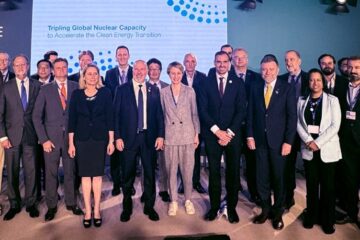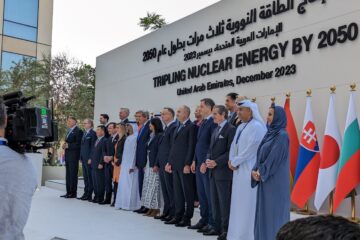Keeping the lights on is of critical importance for a prosperous future
We previously talked about energy security and the impact on global energy markets resulting from the crisis in Ukraine. In that post we discussed energy security from the traditional perspective of risk of disruption in global energy flows as a result of geopolitical issues. Today we will expand upon the concept of energy security to go beyond the political and address the technical issues that impact our ability to deliver energy reliably to consumers. For society to truly prosper, we need strong reliable and resilient energy systems.

System reliability – means a system (or grid) where electricity flows can be counted on to be available when required – i.e., customers need confidence that when they flip the switch, the lights come on, and stay on. Given that electricity supply and demand must be always in balance, our very reliable electricity grids are nothing short of an engineering marvel. Expert planners design systems where supply adjusts to changes in demand as needed, and that can tolerate most supply disruptions (outages – both planned and unplanned) without impacting customers. Some simple rules of thumb (actual system design is quite complex) suggest no single generating station should be larger than 10% of the capacity of the total system and grids should have 15% or more excess capacity to accommodate outages.
Somehow, over the past years, attention to this very important objective seems to have been diluted as the focus shifted to emissions reduction and market deregulation. Therefore, in some jurisdictions, system reliability has suffered due to a too rapid increase in intermittent variable renewable generation that needs dispatchable back up, and poorly designed electricity markets that focus on cost above all else with real time energy markets.
Renewables present two major challenges to system planners. First, their intermittency and reliance on weather complicate system design to ensure there is sufficient back up supply for when the sun doesn’t shine, and the wind doesn’t blow. We have seen, as stated in an article by Robert Bryce, where an excessive focus on renewables just doesn’t make sense. For example, in hot climates like Texas, the times when you need the most energy are also going to be the times when you have the least wind. That’s just how the weather works.
And the other, less talked about issue is that even though there may be large numbers of solar panels or wind turbines in operation within a given jurisdiction, they actually behave on the system as one very large super plant. Hence the famous “duck curve” in California where all solar panels come on at once when the sun rises in the morning and then all go off when the sun sets. This causes additional stresses for reliability planning as the system tries to respond to these large sudden changes in supply.
We talked about the issues with deregulated market pricing in a previous post noting that least cost does not necessarily mean most reliable. And now as we did then, we will recommend reading Meredith Angwin’s book, “Shorting the Grid.”
System resilience – which is related to how well the system can withstand external events that may cause it to go down such as extreme weather or other man made events. This concept took hold post 9/11 when the concern was how to harden power plants against potential terrorism. More recently the issue has been extreme weather such as hurricanes, tornadoes and wildfires that have forced systems down and damaged them to the point of disaster. The unfortunate thing is that the same jurisdictions we listed above, Texas and California are also suffering from these kinds of extreme weather events, that are challenging the ability of their systems to operate reliably.
This is where nuclear power can play an important role. Nuclear power’s high energy density, low carbon emissions, highly reliable operations and built-in resilience can provide the stable energy source we need. It is one of the reasons law makers in California have provided overwhelming support for a bill to keep the Diablo Canyon nuclear plant operating at least another five years, once thought impossible.
Having reliable affordable access to abundant energy is one of the tenets of a prosperous society. Our lives are much better for it. A public threatened with losing this reliable access will not respond well. We have become so used to having a reliable grid that we now take it for granted. However, assuming it will always be, misunderstands how complex an electricity grid actually is. It’s time to go back to basics and ensure that system reliability and resilience are the cornerstones of our energy systems. Given the need for a stable baseload 24/7 supply, nuclear power has an important role to play.





1 Comment
bruce macdonald · September 29, 2022 at 10:31 am
Always insightful. I always enjoy reading this Blog. Thx.
Comments are closed.